Bosnia and Herzegovina
Bosnia and Herzegovina is a wild country full of scars. Rugged mountains and rocky valleys, sun-scorched fields and crystal-clear lakes. The past is close and cruel. The social divisions left behind by Yugoslavia and its bloody end run deep. In hardly any other country do the Occident and Orient clash more fiercely than in Bosnia and Herzegovina. But tradition and modernity, ethnic nationalism and a multi-ethnic state, denial and truth are also opposites that stand side by side here. Despite everything, the people of this beautiful country are hospitable and full of warmth. A country on the move, with hope in the hearts of its people.

A small border crossing takes us from Croatia to Bosnia. We follow a narrow road that winds its way up a mountain in numerous bends. The road becomes a dusty track. We seem to have taken a wrong turn. Steep descents and potholes, low-hanging branches and passing idyllic farmhouses – at some point we return to a well-maintained highway that leads us to the largest city in the region.
Banja Luka is surrounded by gorges and mountain landscapes. Green avenues run through its heart, with the river Vrbas flowing through its center like an artery. An old fortress marks the medieval center. Today, Banja Luka is the seat of government of the Republika Srpska and a university town. Somewhat sleepy on this hot summer afternoon, a few people sit in the shade in the cafés and bars. The spire of the Cathedral of the Redeemer casts a shadow over the surrounding square. An old woman has raised her eyes reverently to the cross at the top.
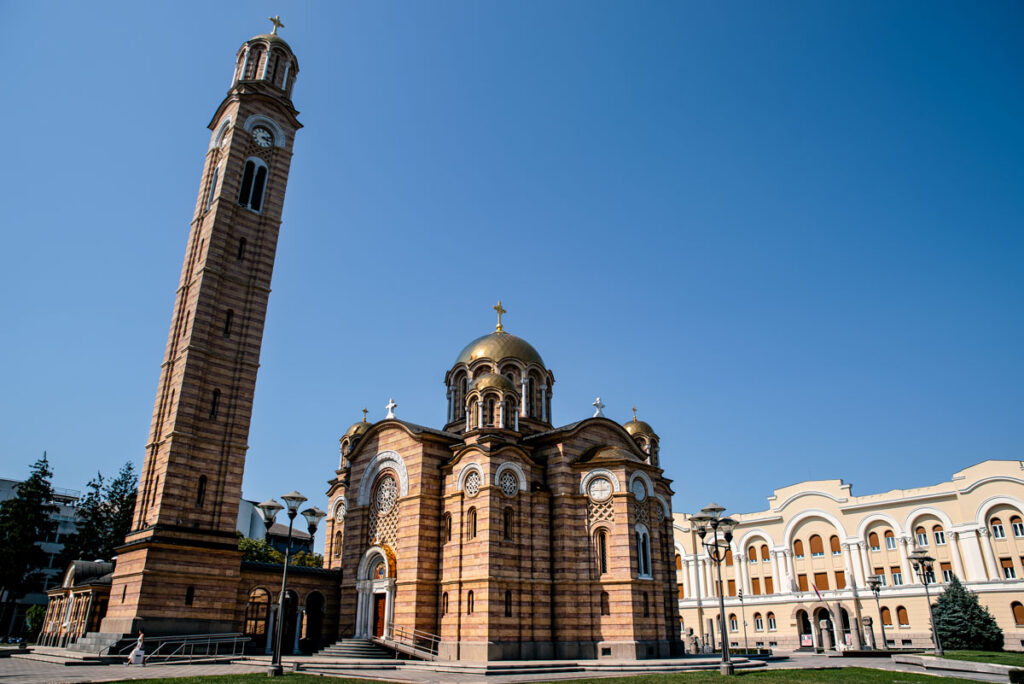
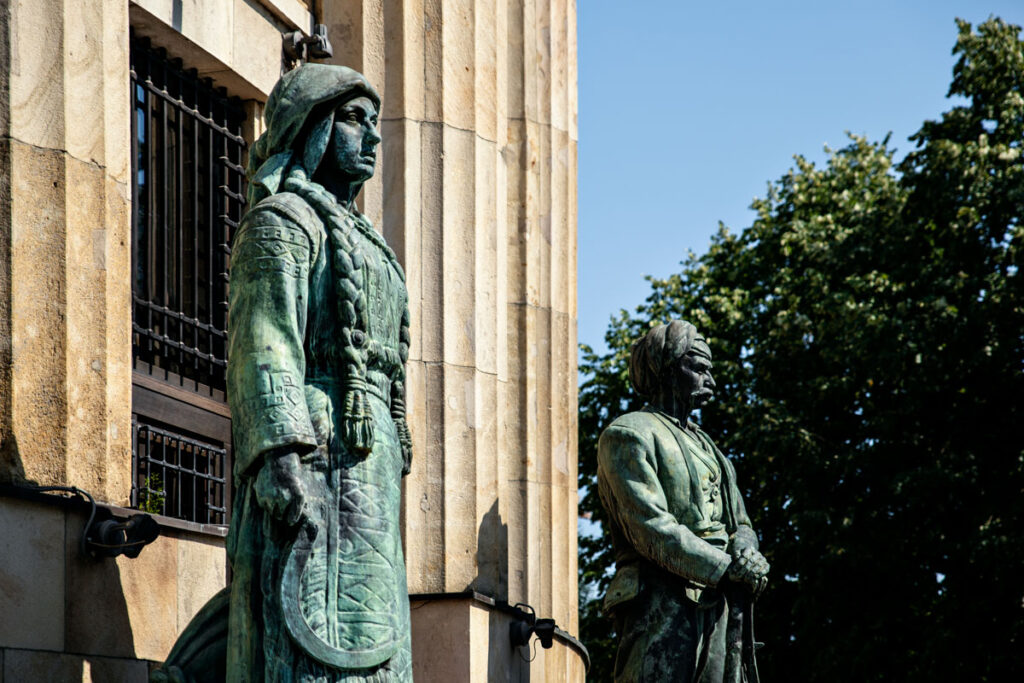
We cross gorges and narrow serpentines – time and again, buses and trucks have to swerve and maneuver to the side of the road with centimetre precision to allow oncoming cars to pass. Finally, we reach Sarajevo. At first, the outskirts of the city present themselves as ugly remnants of the Yugoslavian era. Then, after we have safely parked our car, we suddenly find ourselves in an insane pedestrian zone. A road marking separates the Christian-western part of the city from the Ottoman-eastern part. The worlds could not clash more starkly. In the Christian quarter, Orthodox churches rise up out of the sea of houses. The facades of the buildings, architectural styles and elements, colors and shapes are diverse. Much is run-down, only a few have been renovated. At the end of the pedestrian zone, an eternal flame burns in memory of the victims of the Second World War.
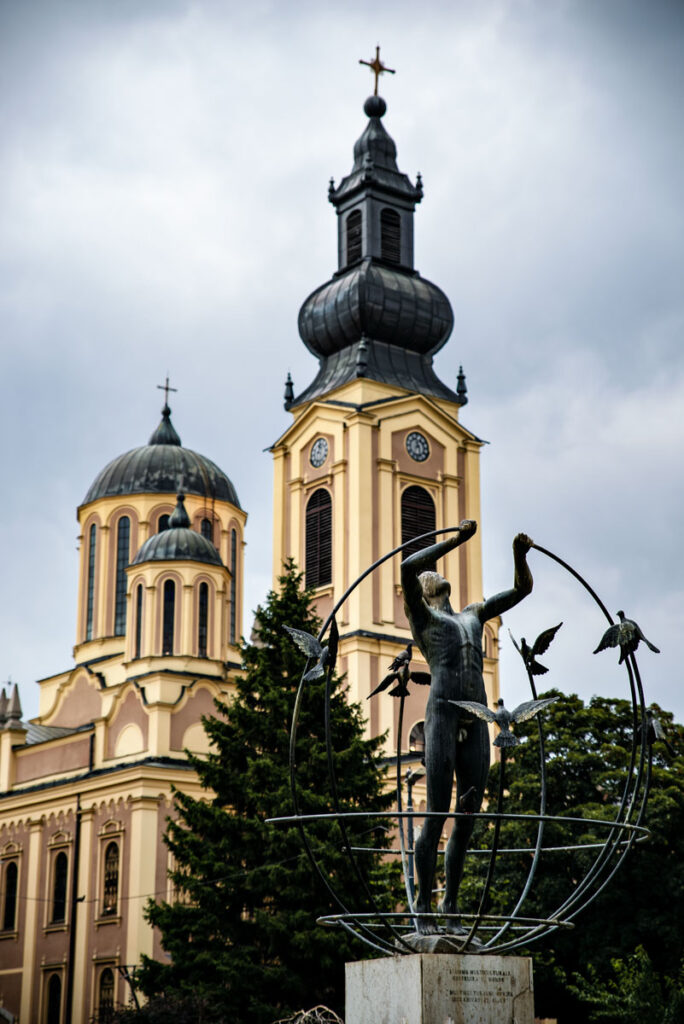
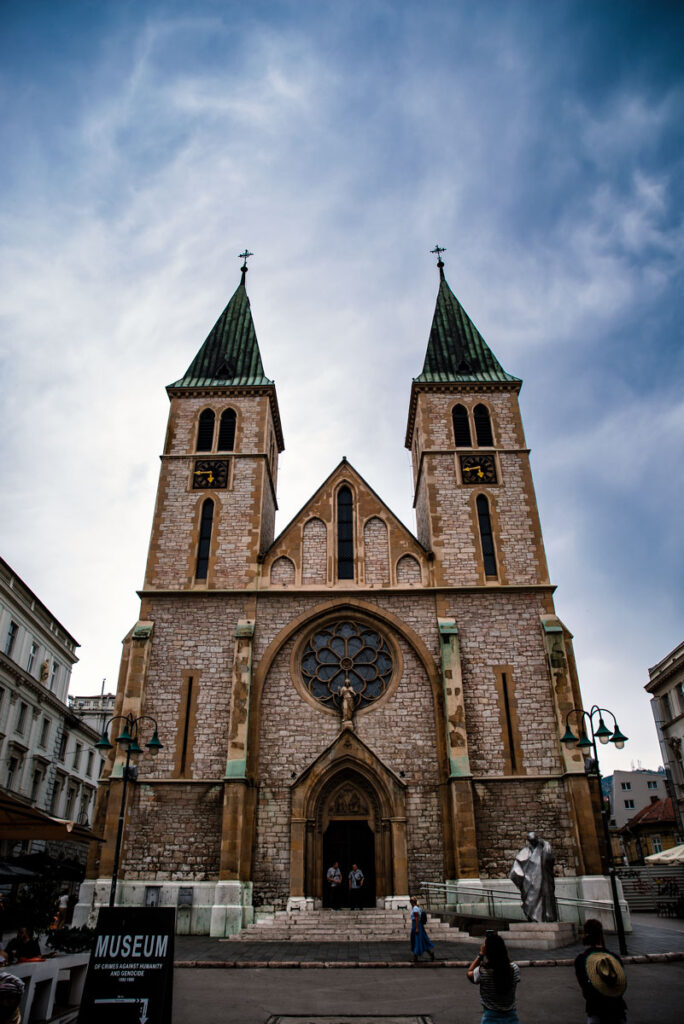
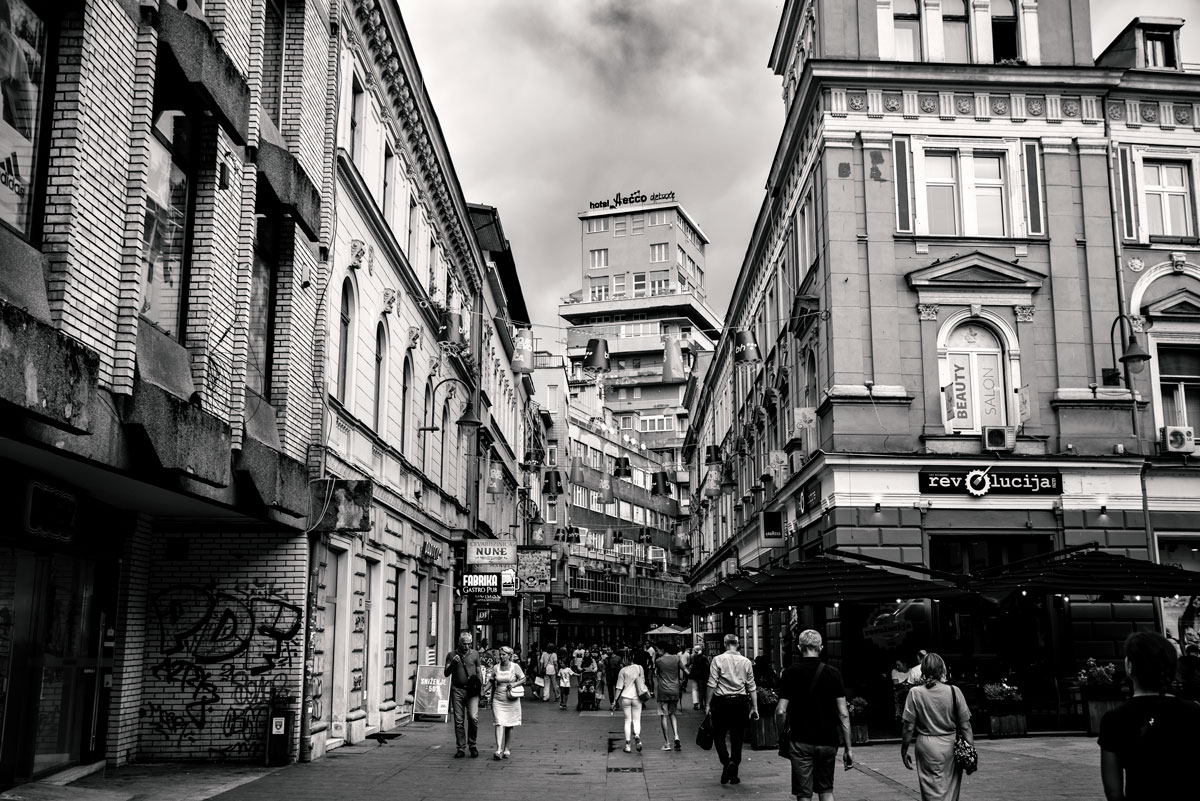
We turn around and walk back to the Ottoman part. The street becomes increasingly crowded. The Turkish cafés are filled with people. Praying people gather in front of the mosques. It is an inextricable hustle and bustle. Small bazaars and craft stores are hidden in the back alleys and side streets. Copper cups and ornately crafted metal goods. Sweets and carpets. The smell of shisha steam and baked bread hangs in the air. In one fell swoop, we have been thrown around a thousand kilometers further into Istanbul. We will change worlds several more times this evening and be amazed again and again.

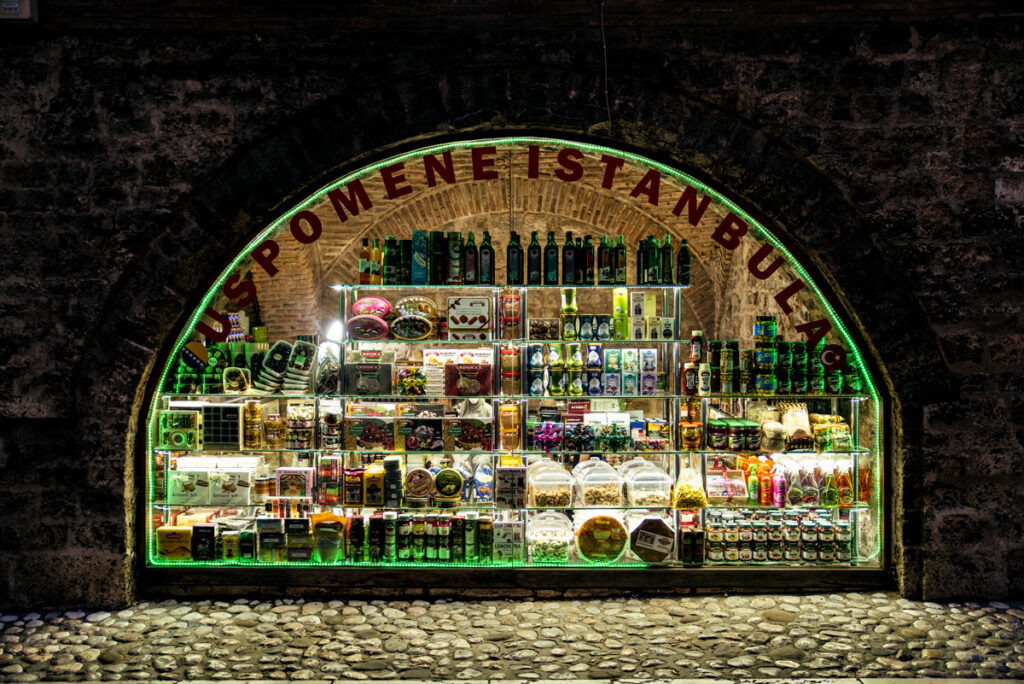
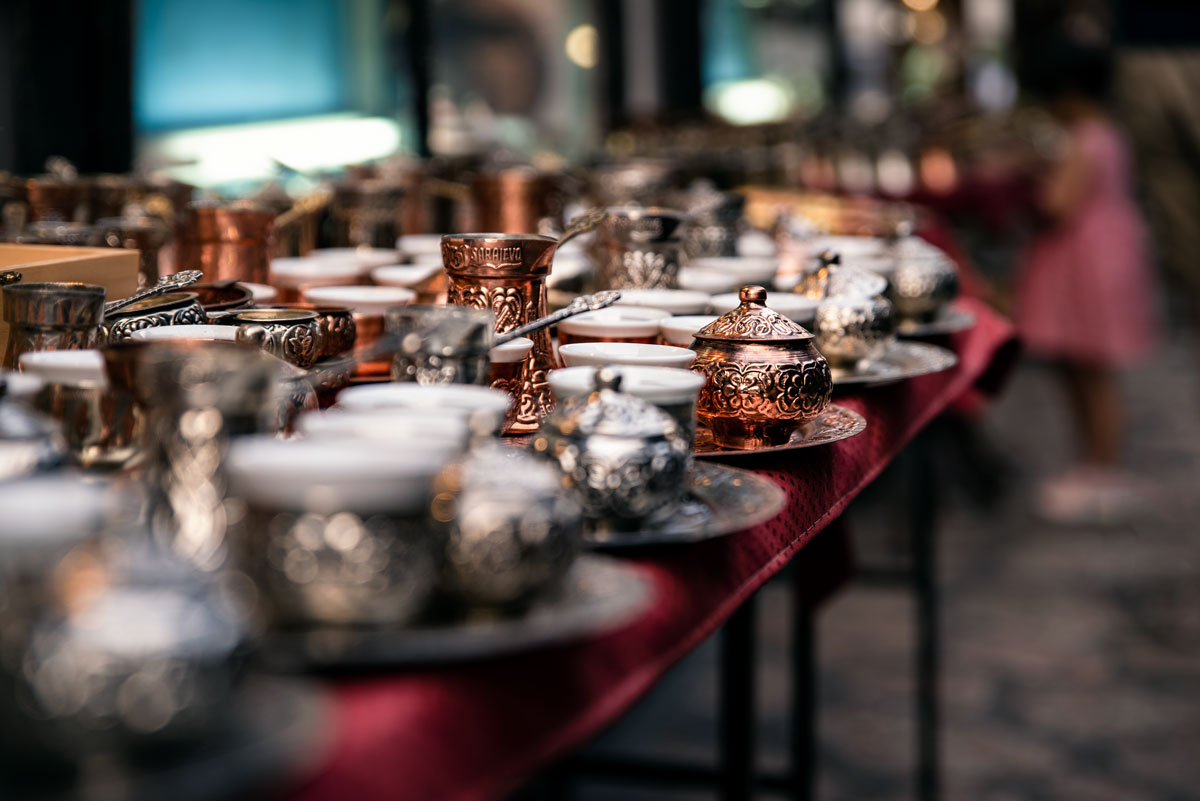
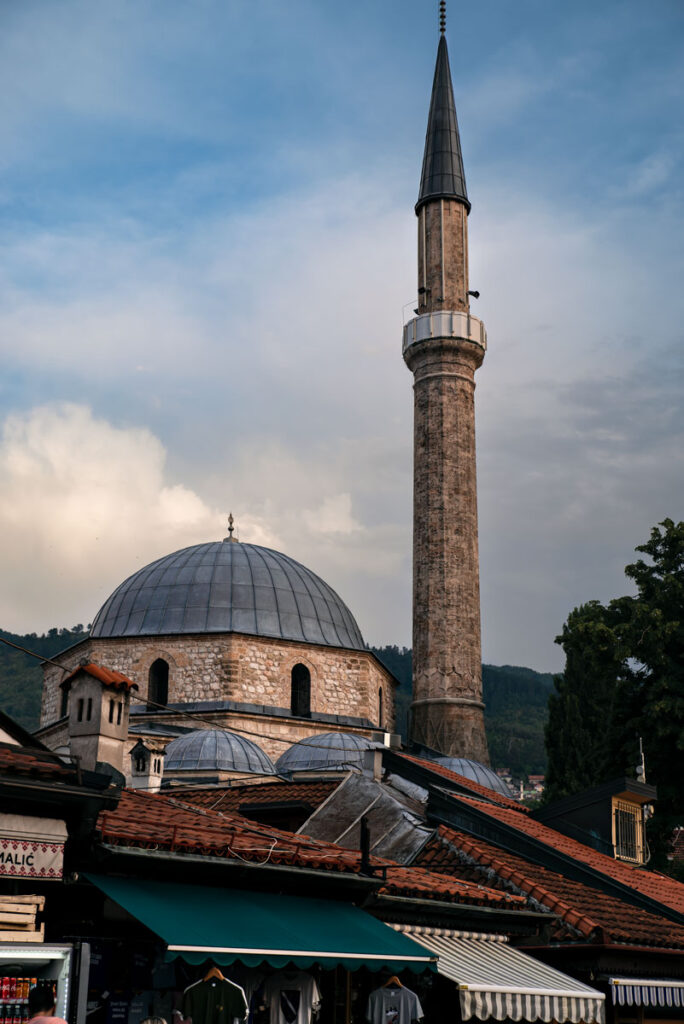
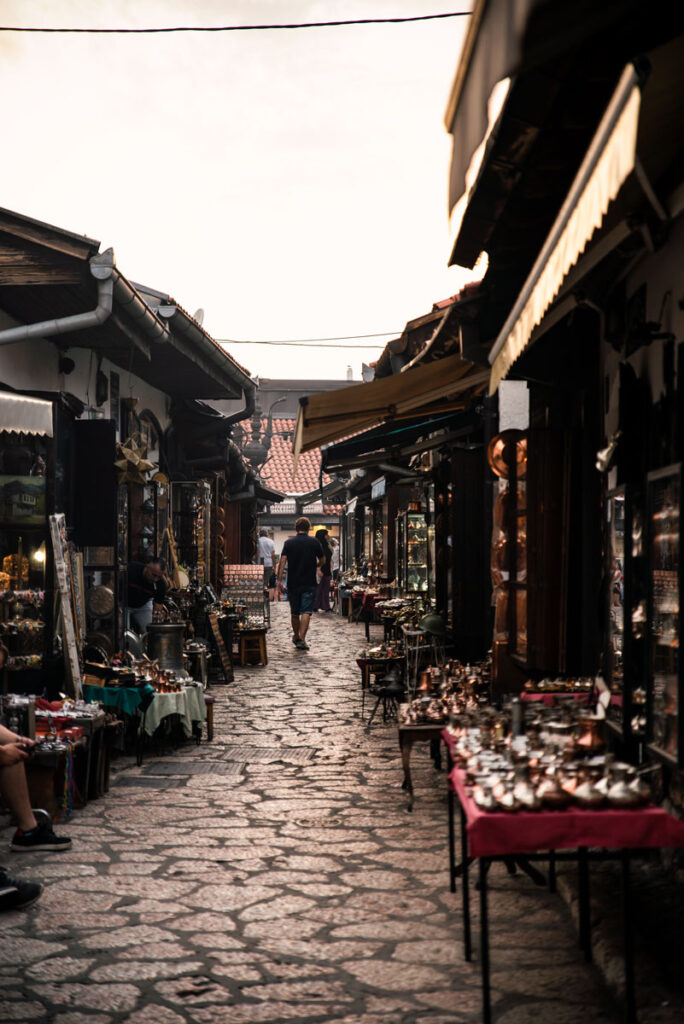
The people of Sarajevo are resilient and full of hope, despite a cruel past. During the siege of the Bosnian war, when even water was life-threatening to obtain, they shared bread and courage. Today, the city’s inhabitants stroll across Markale Square, once the scene of a tragedy, which is now full of life. Cafés are filled, music plays and the streets are full of children, couples, old people and tourists. Sarajevo is a place where past and future coexist.
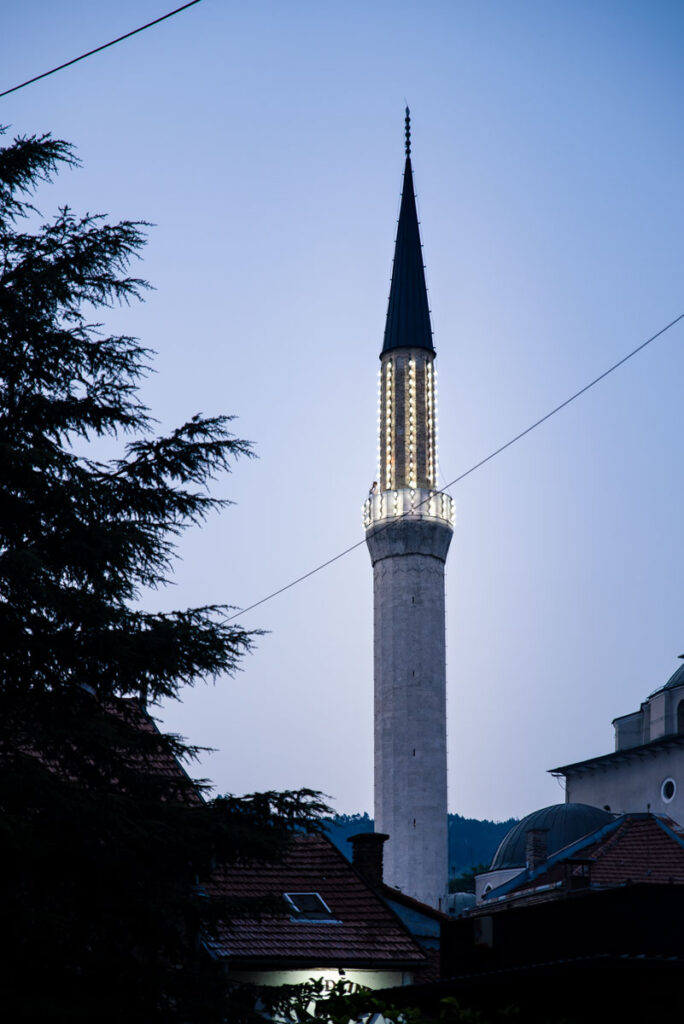

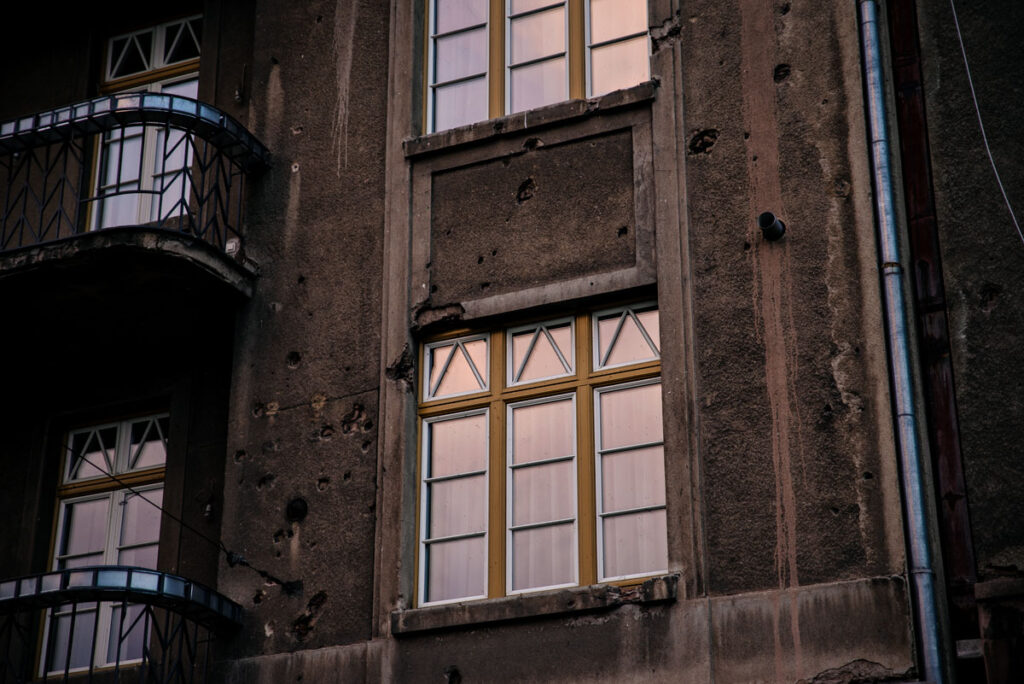
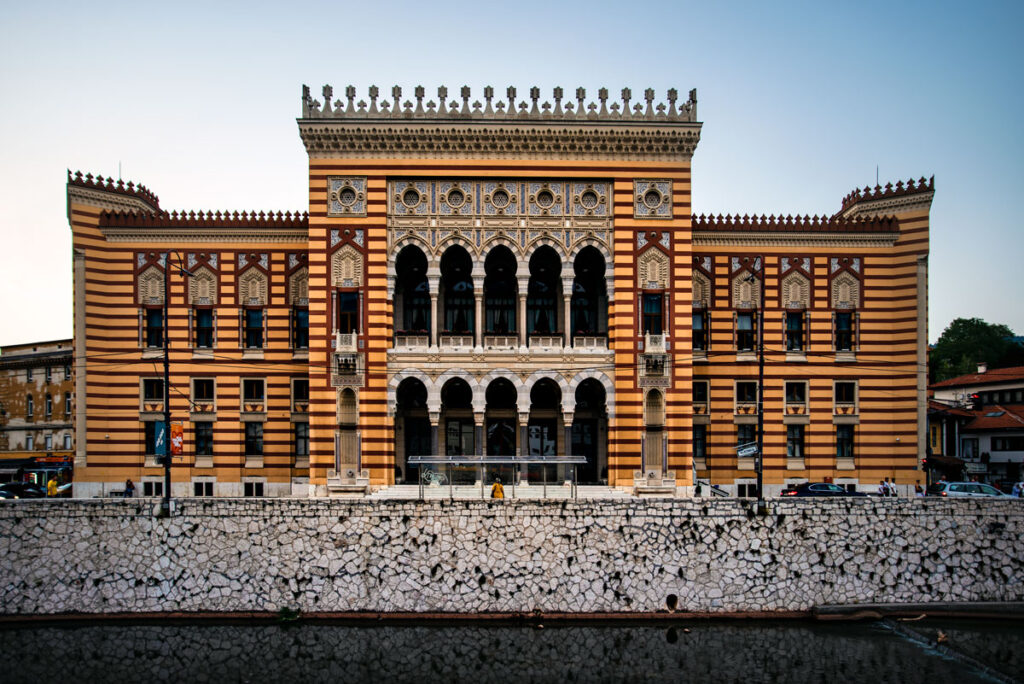
Out of the capital. We follow a road that gets narrower and narrower, winding higher and higher through bushes and shrubs. Suddenly, there is a portal in front of us: nature has carved a gate into the mountains, which we pass through. A high plateau with a barren steppe landscape, conifers, lonely vacation huts and a crystal-clear mountain lake stretches out behind it: welcome to Blidinje National Park.
Lunch in a tourist restaurant – probably the only one up here. Groups of quad bikes roar pass us from time to time. We leave the road and circle the lake on a bumpy dirt track. We set up camp in a sheltered spot right by the water. A storm is brewing over the mountains. Rain and hail force us to sit out the storm in the car. When the sky clears later, we explore the surrounding area. It’s the idyll we’ve been looking for. This evening, it is ours alone.
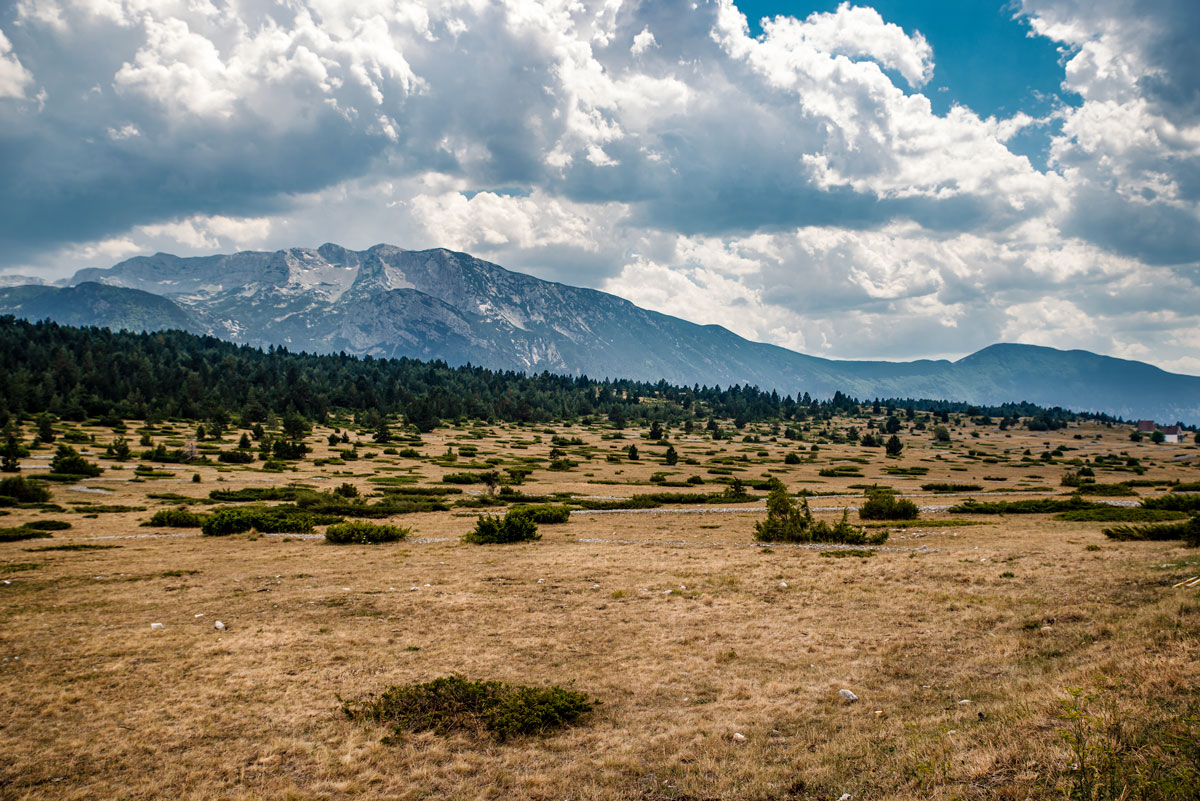
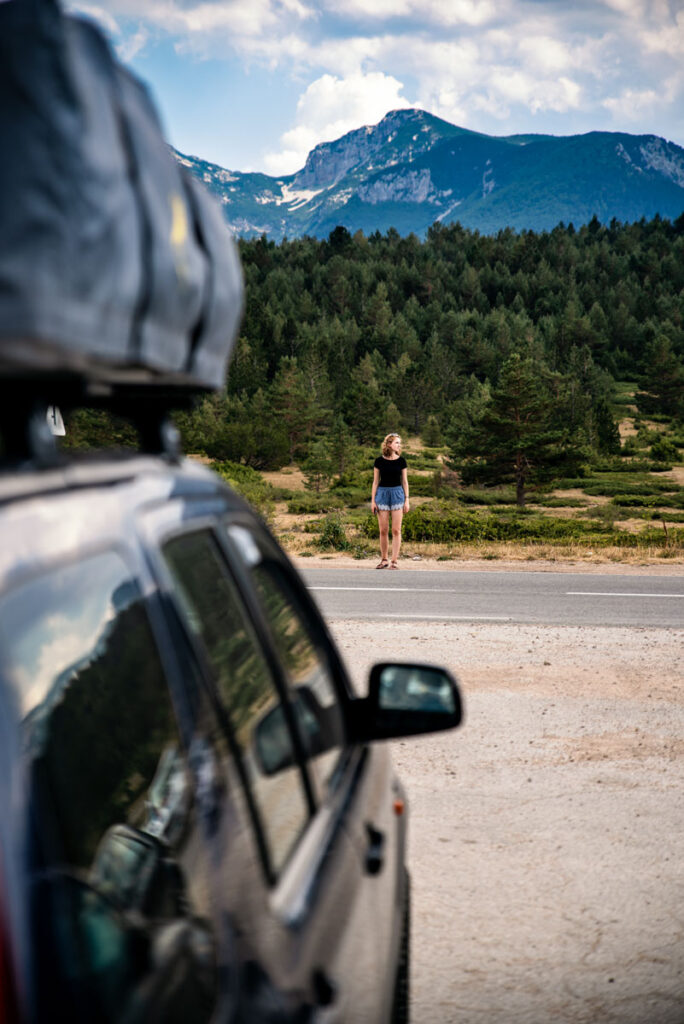
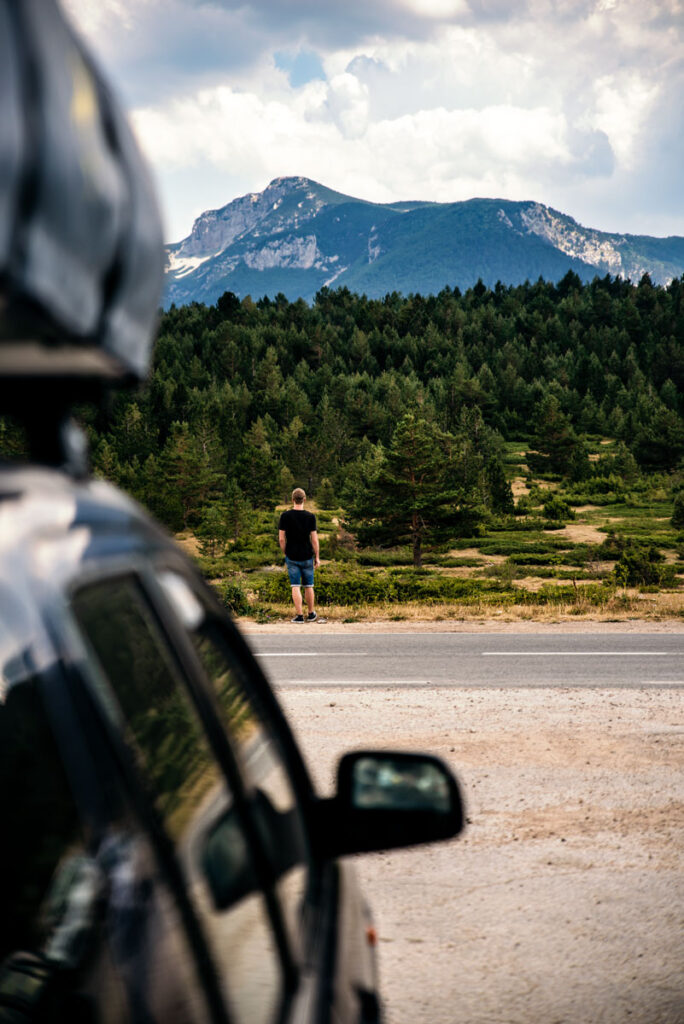
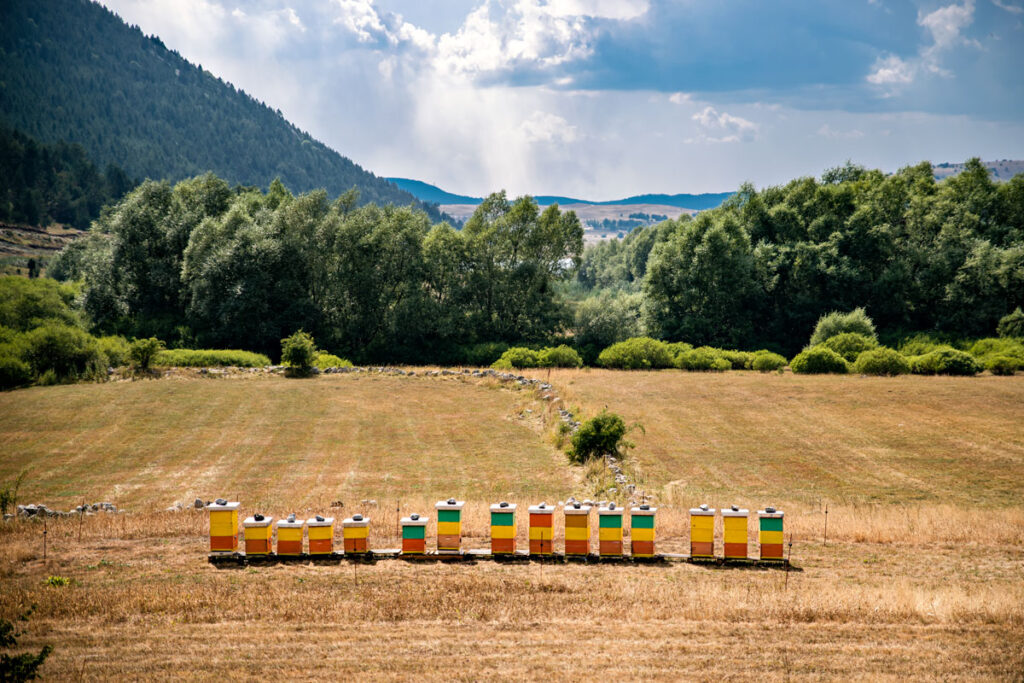
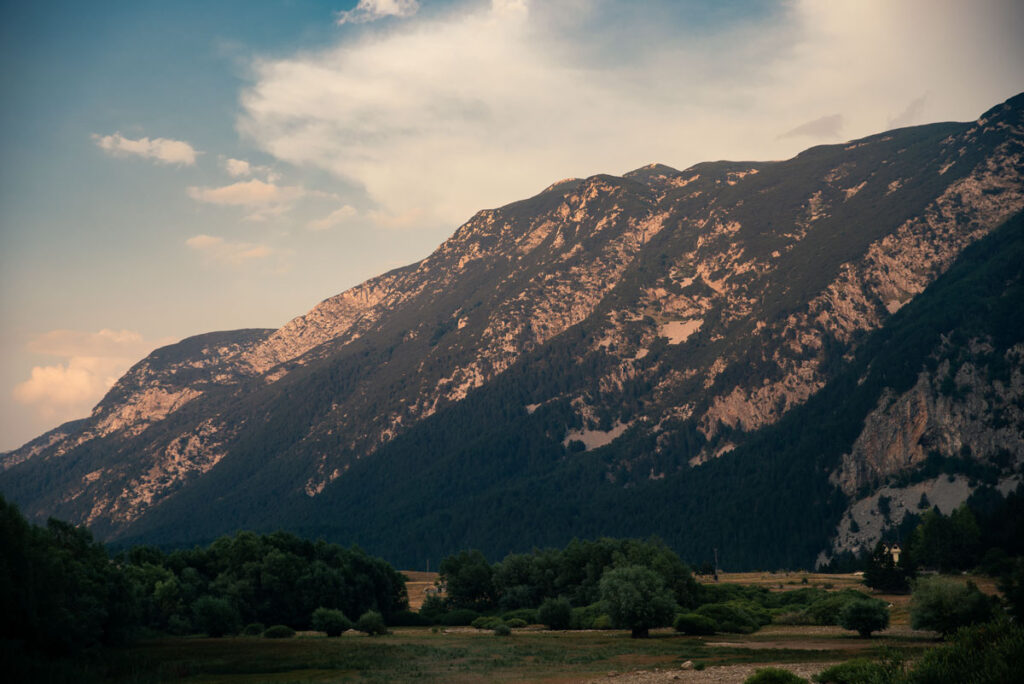
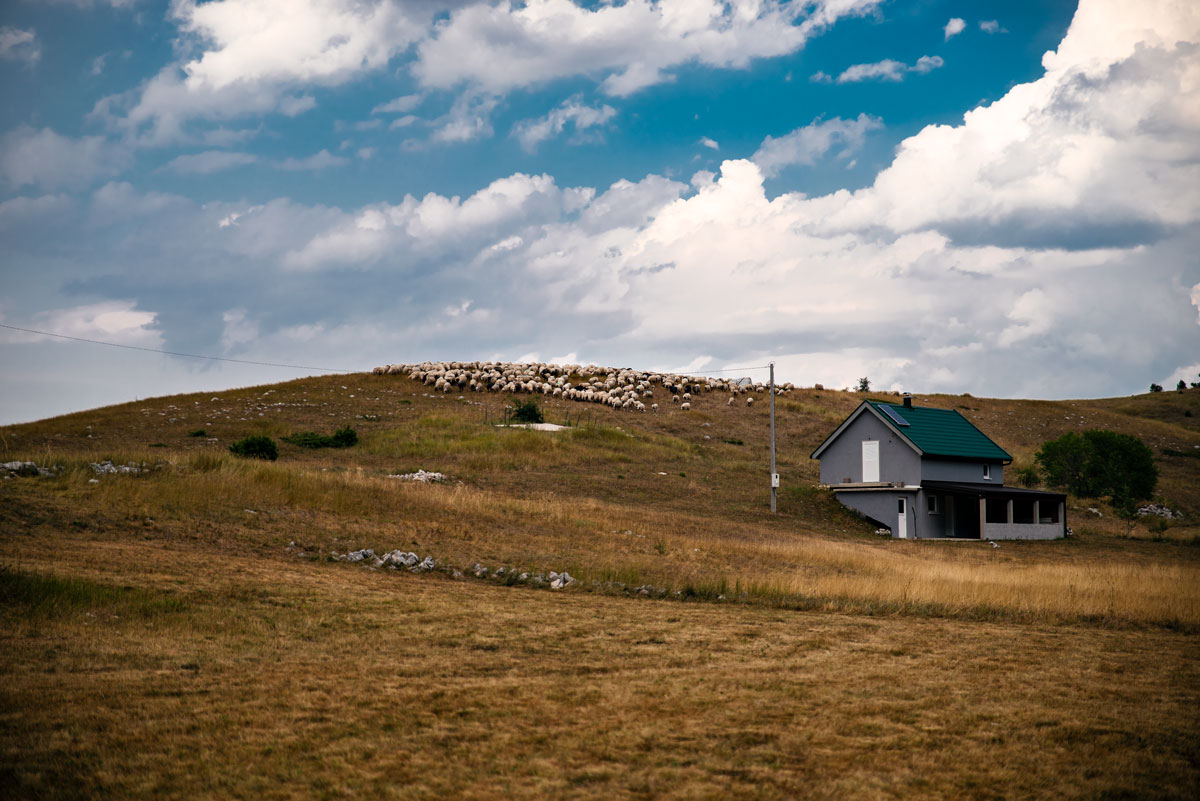
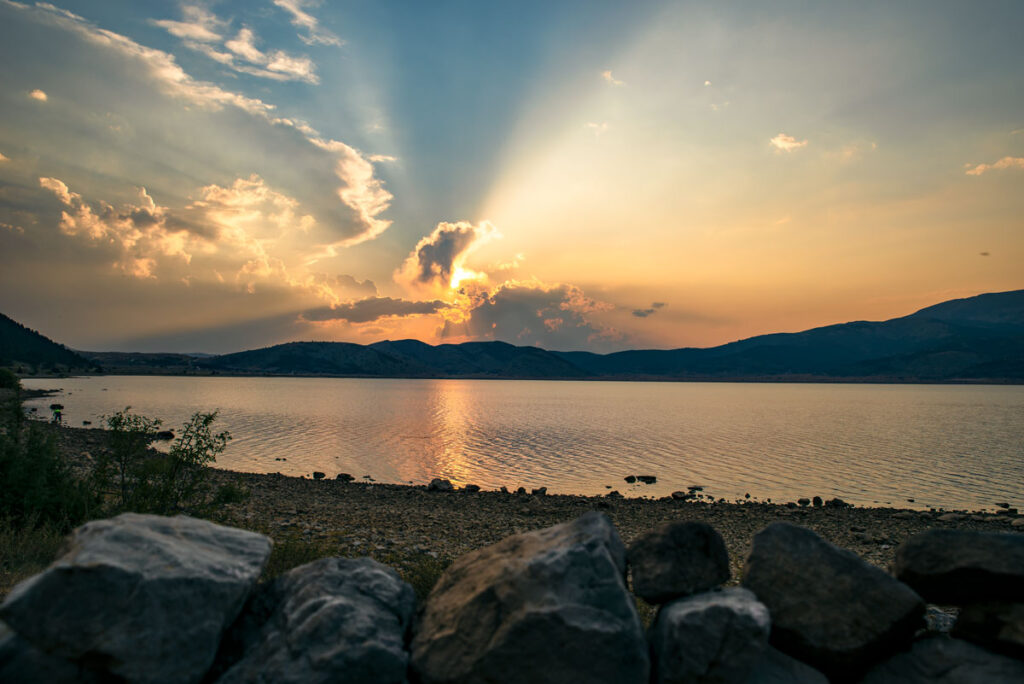
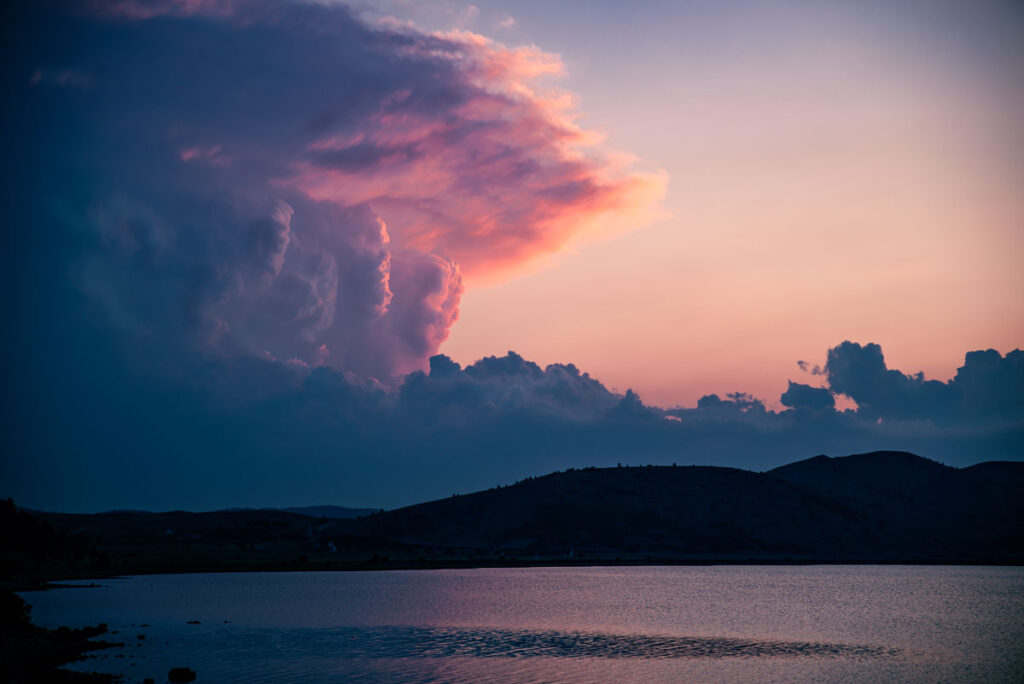
The topless man climbs over the railing of the bridge. A minute-long show in which he fires up the waiting mass of people. He asks for silence, spreads his arms, then lets himself fall. He elegantly plunges 19 meters into the depths before sinking into the water. Destroyed during the Bosnian war and rebuilt ten years later, the Stari Most bridge has become a landmark of Mostar. Nestled between mountains and full of winding alleyways, the city and its surroundings are a place to be discovered. The minarets of numerous mosques rise up between the flat houses. Boats float down the River Neretva, on which banks spectators watch the bridge jumpers.
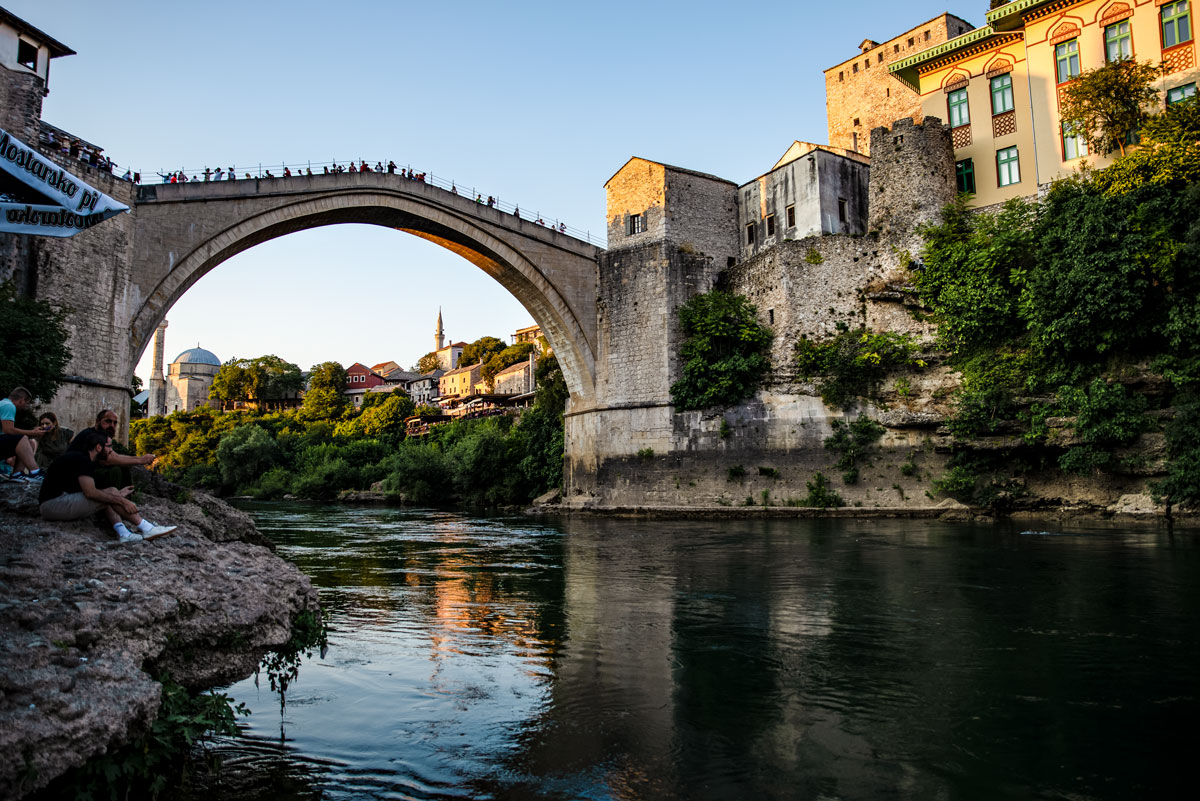
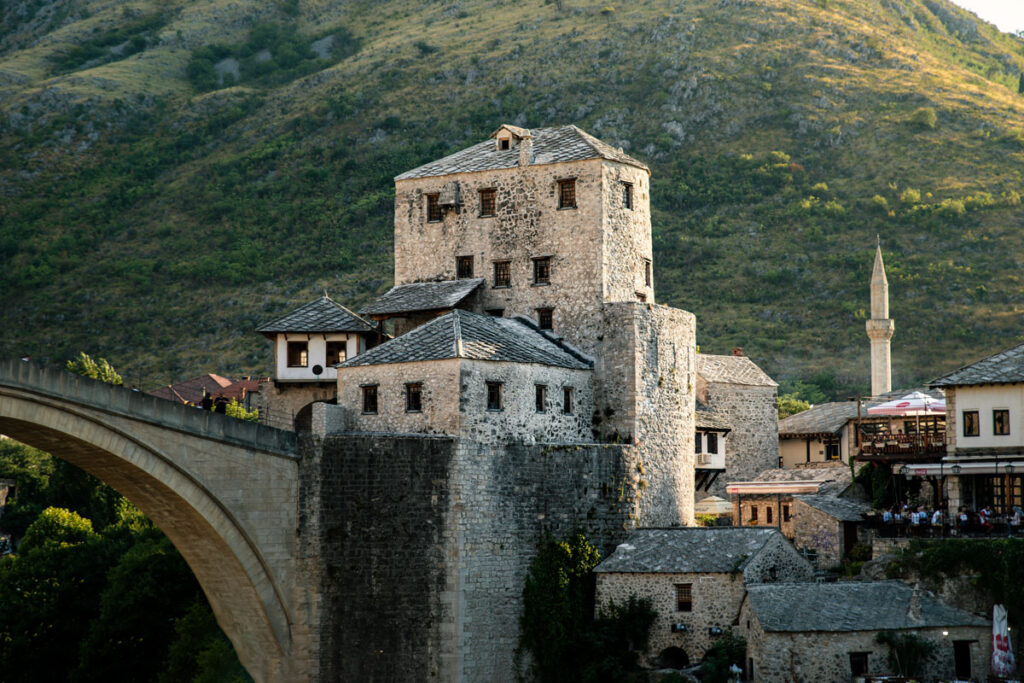
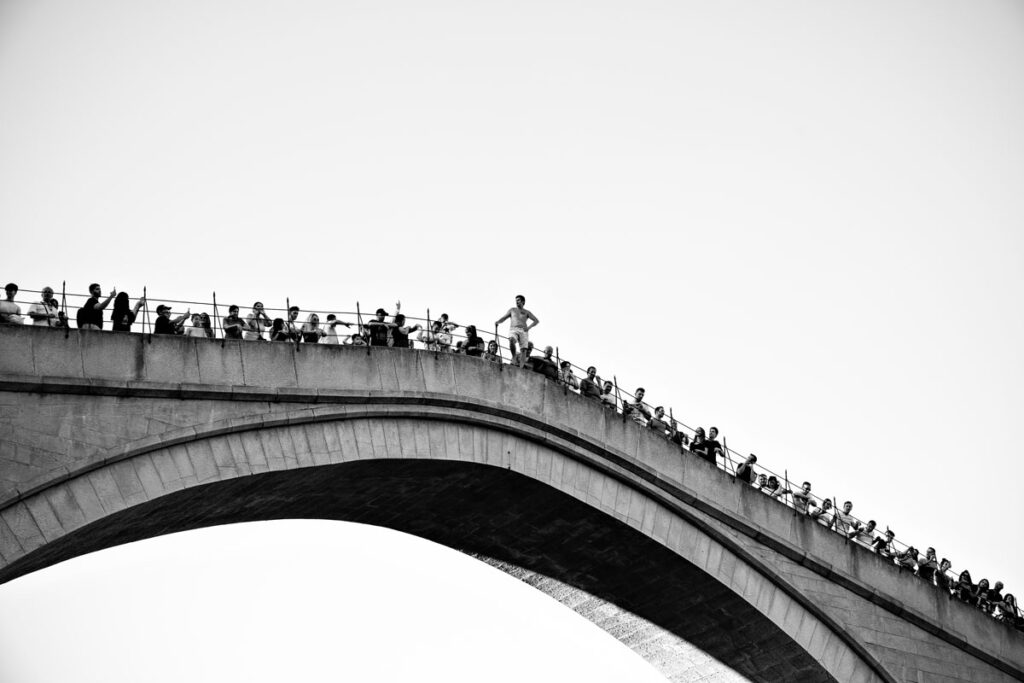
The darkest chapter in the country’s history is probably the genocide of around 8,000 Bosniaks. To this day, the murderers, commanders and the Republic of Serbia shirk their responsibility and deny history.
Srebrenica lies in a green valley. Pear and apple trees grow on the edge of a ruined castle. On the outskirts of the town are cemeteries. Minarets and a church tower stand close together. Young people have sprayed graffiti on an abandoned hotel. A conspicuous number of houses are left empty and destroyed. Even if the great killing did not take place here, it is impossible to imagine Srebrenica without the screams and desperate tears of the victims. The region has still not recovered from the massacre. A large part of the population has not returned and a certain lack of prospects prevails.
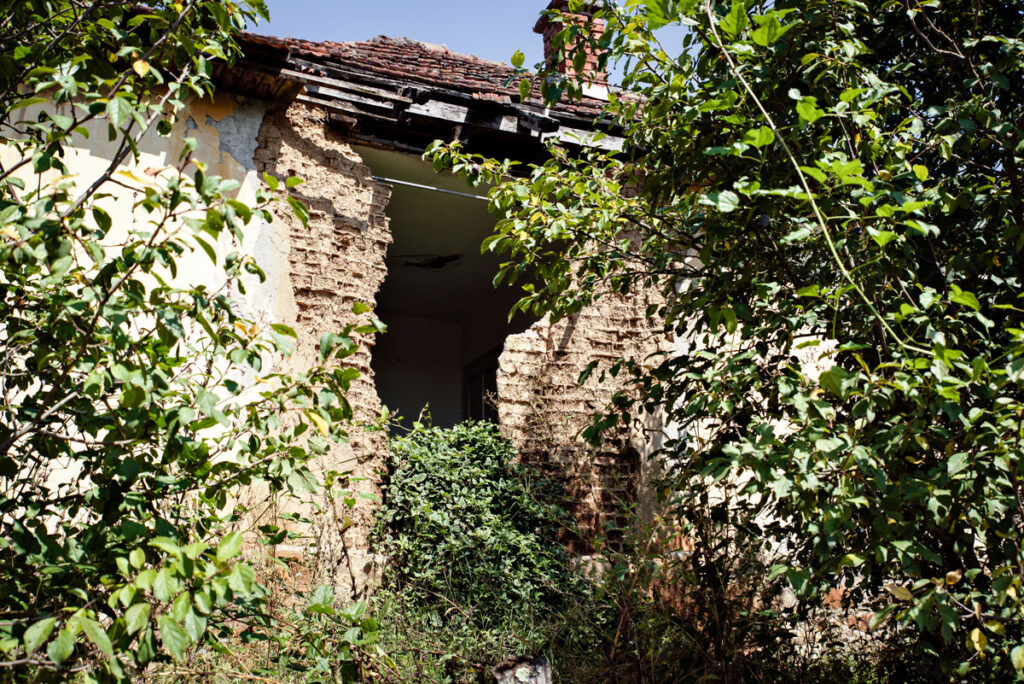
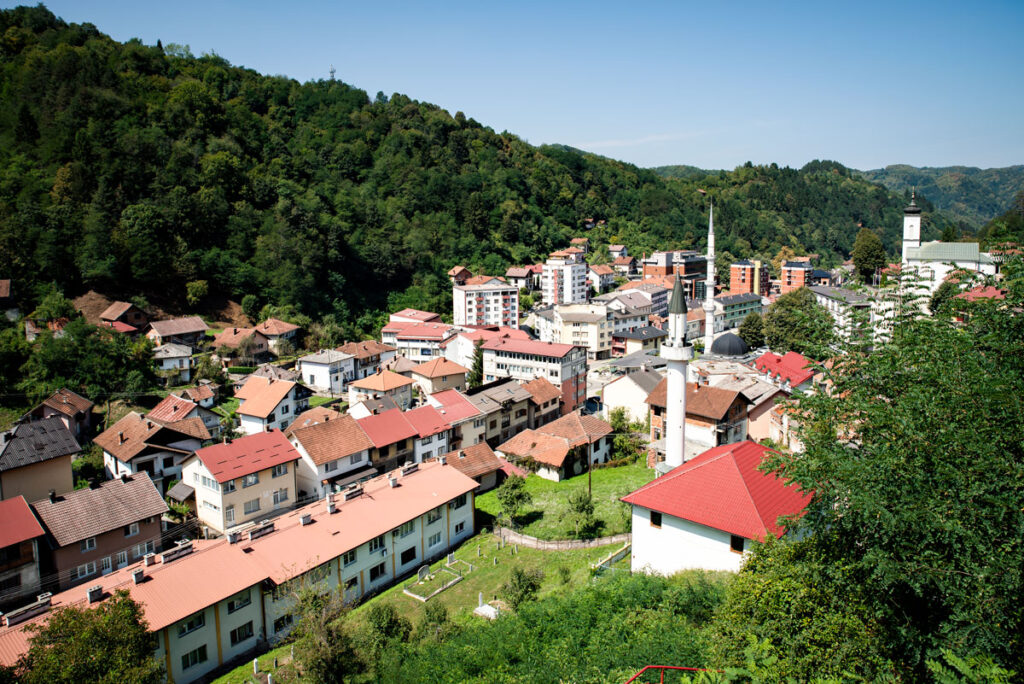
The UN Blue Helmet mission was housed in a former battery factory. Refugees sought shelter in this supposedly safe haven. The Blue Helmet soldiers watched as the Serbian military, led by Ratko Mladić, separated men and women and decided who would live or die. Men and boys were taken to neighboring villages for execution.
An unbearable silence hangs in the former factory halls. Horrified faces, secret tears. Pictures and videos show the horror. Art installations and objects from the mass graves bring the history agonizingly to life.
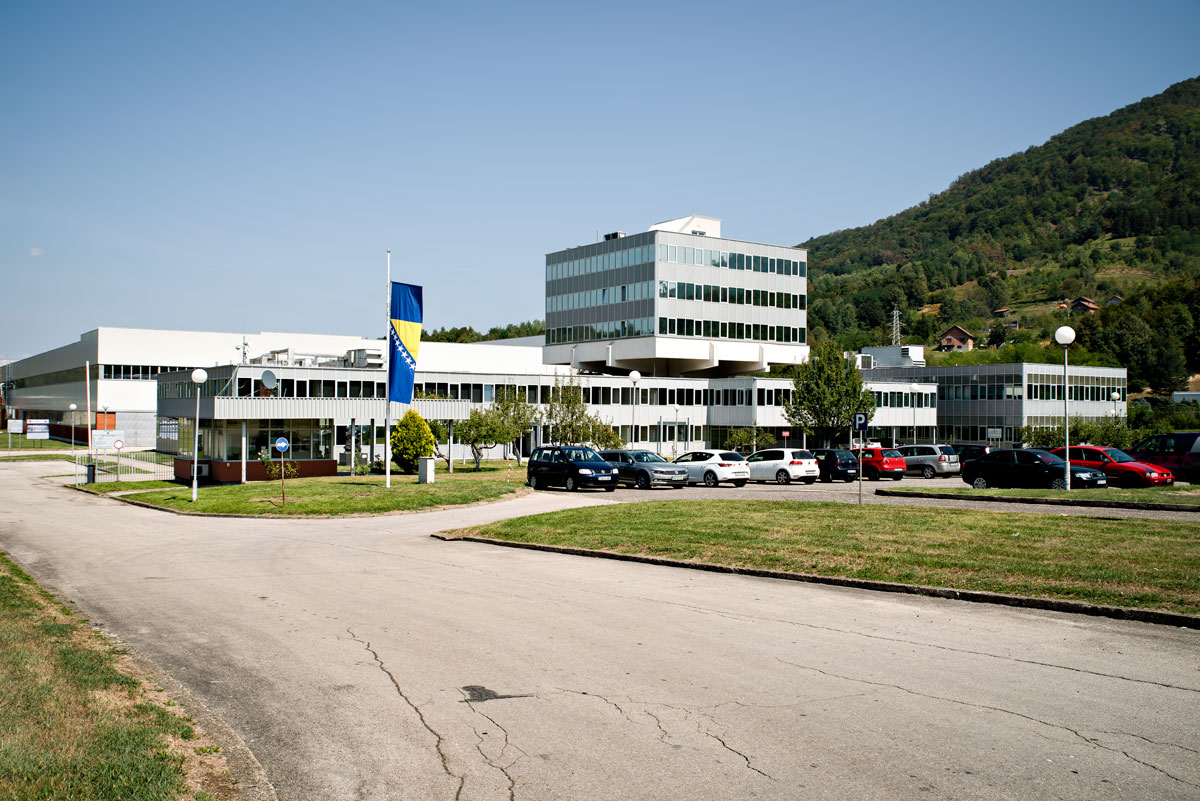
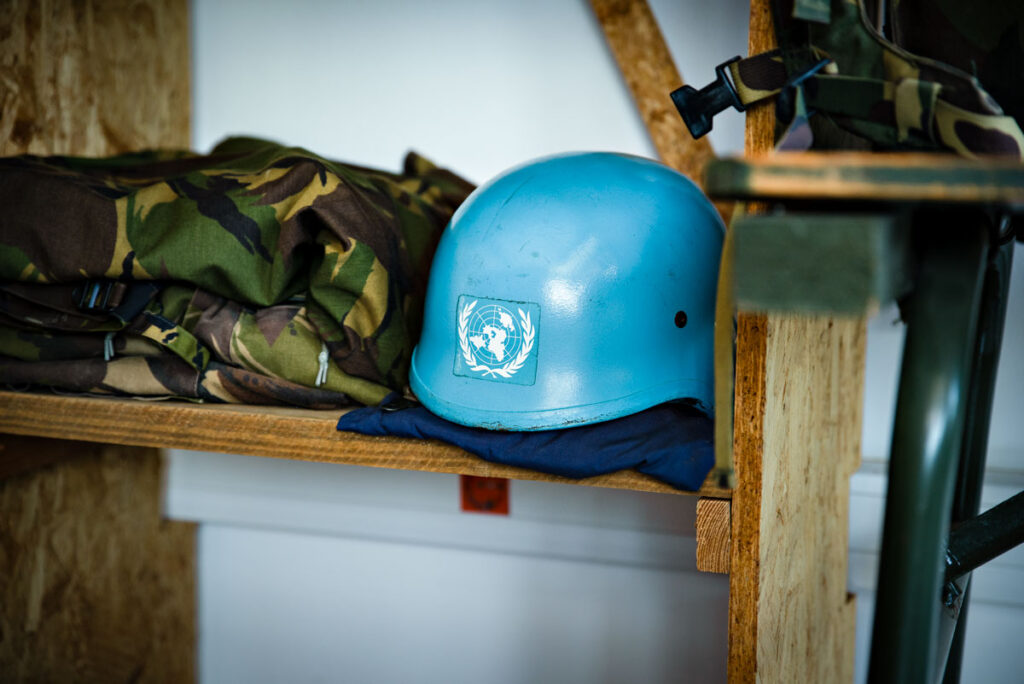
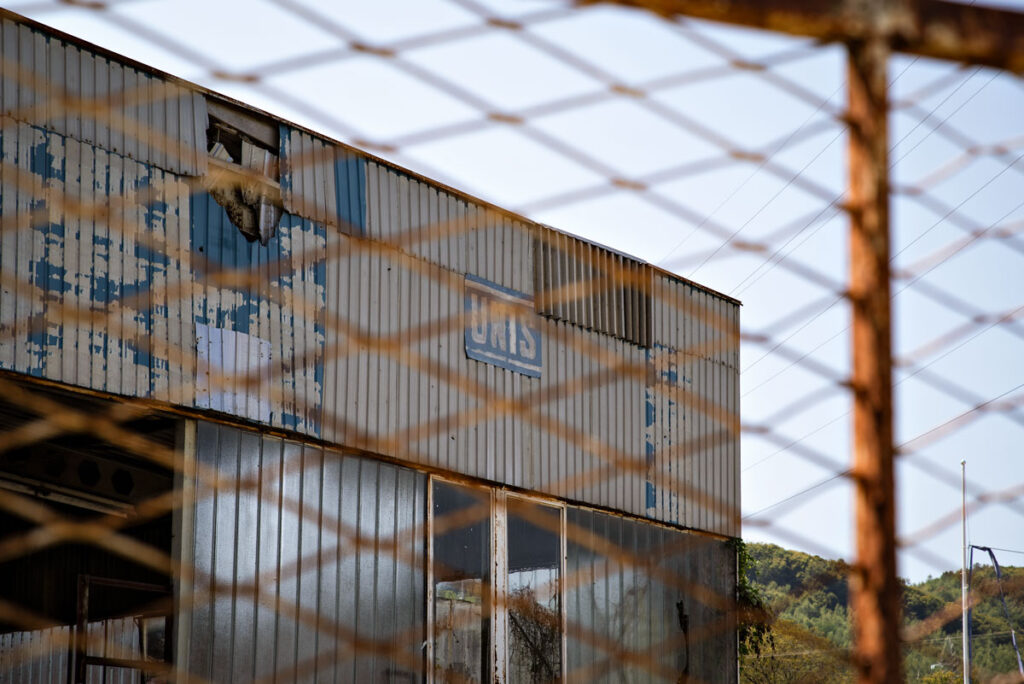
The Brčko district still plays a special administrative role today and shows that the social and ethnic divides in the country are still deep. Officially, the Federation of Bosnia and Herzegovina and the Republika Srpska administer the Brčko District.
On this warm late summer evening, the pedestrian zone of the border town is full of people. Two girls are selling homemade bracelets. Bosnian, German and English are spoken. Many of those who fled to safe countries during the Bosnian war have started families in their new homeland. Now they have returned for a vacation. The atmosphere is relaxed, laughter echoes through the streets.
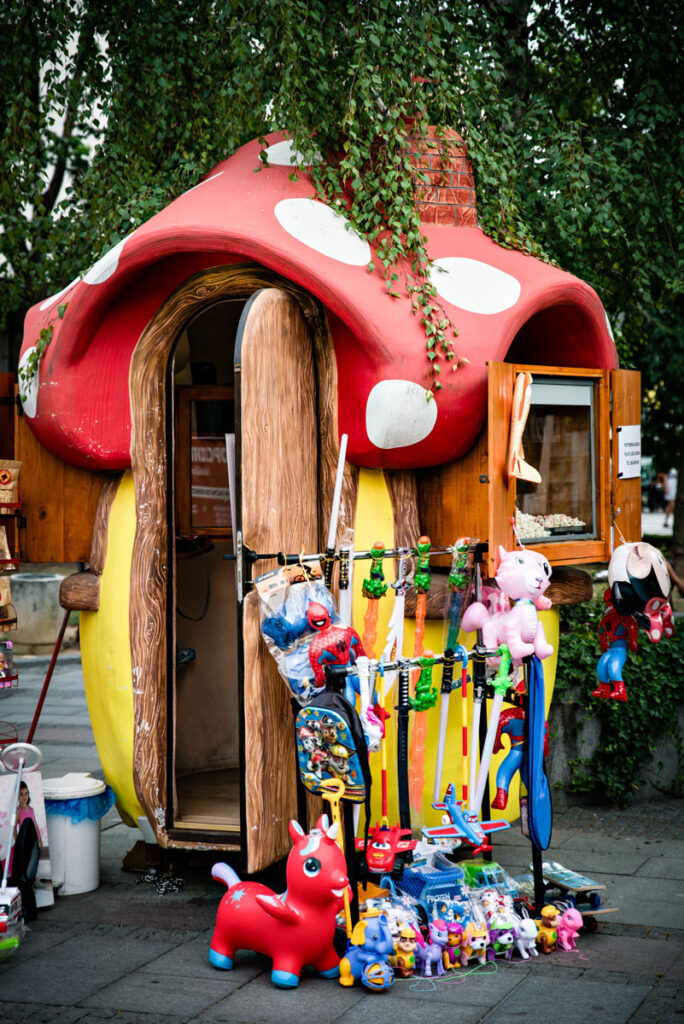
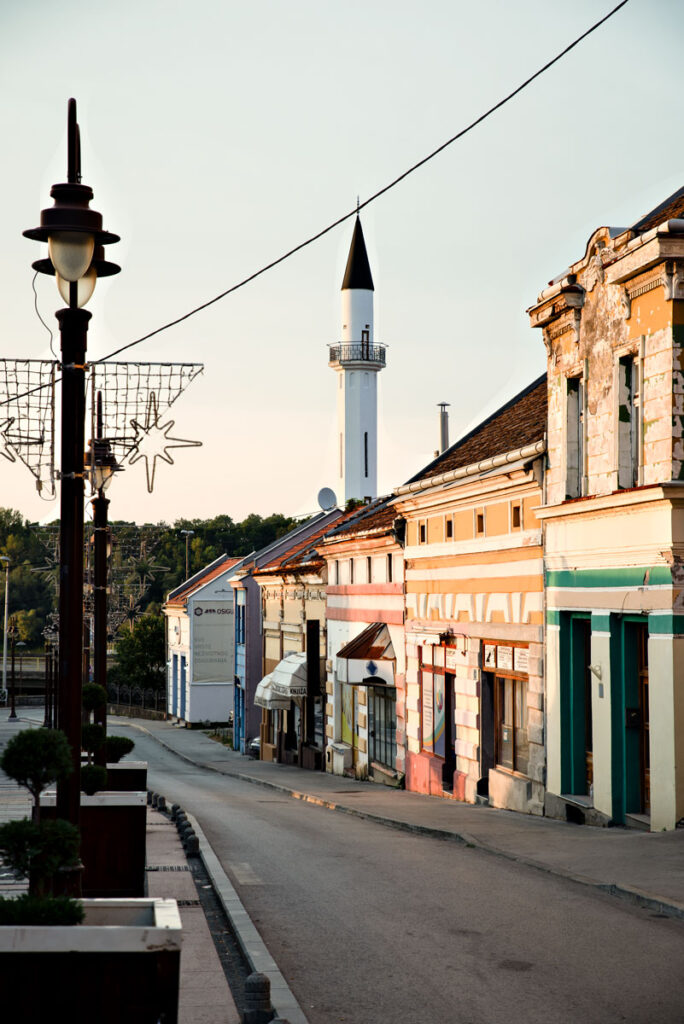
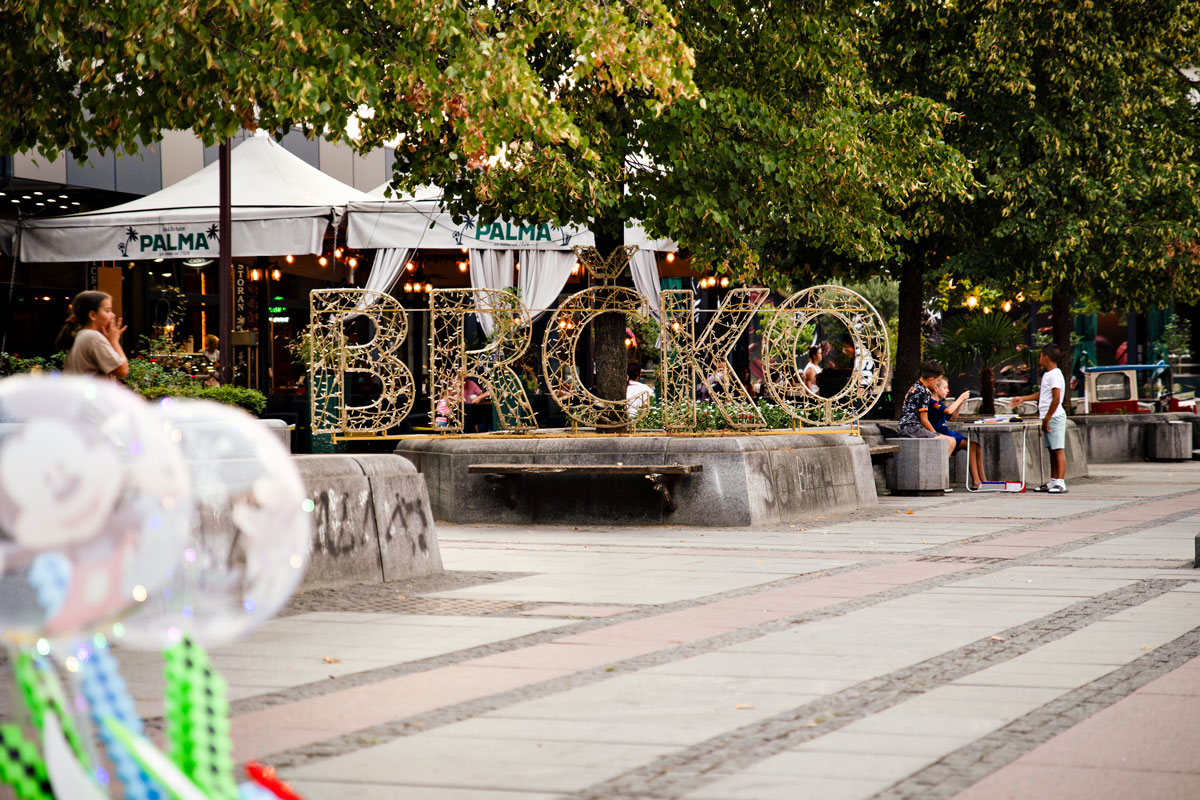
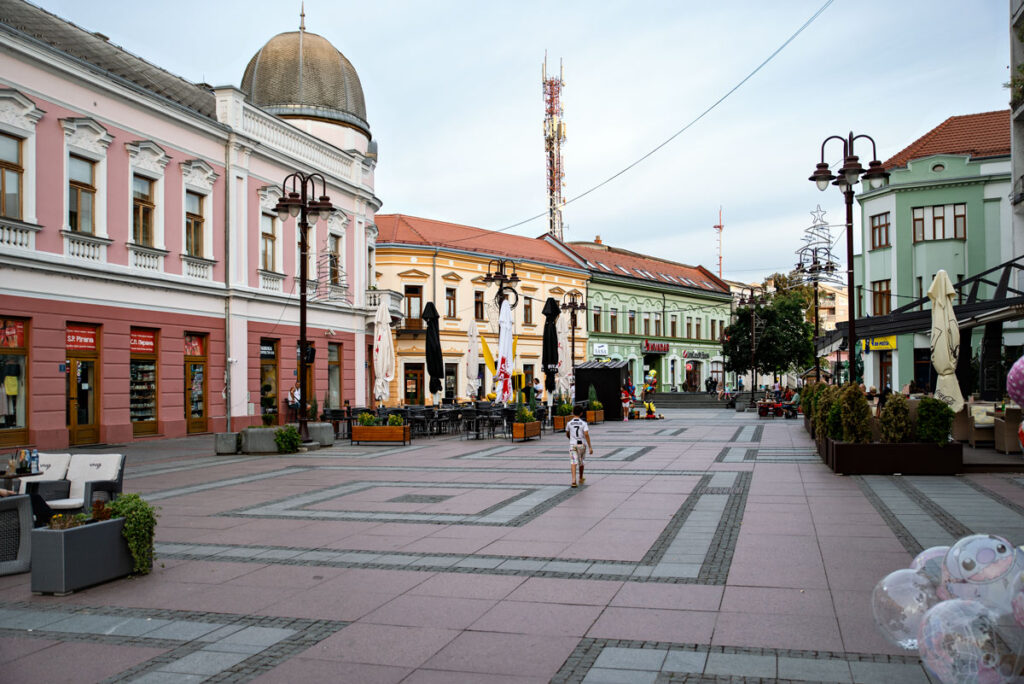
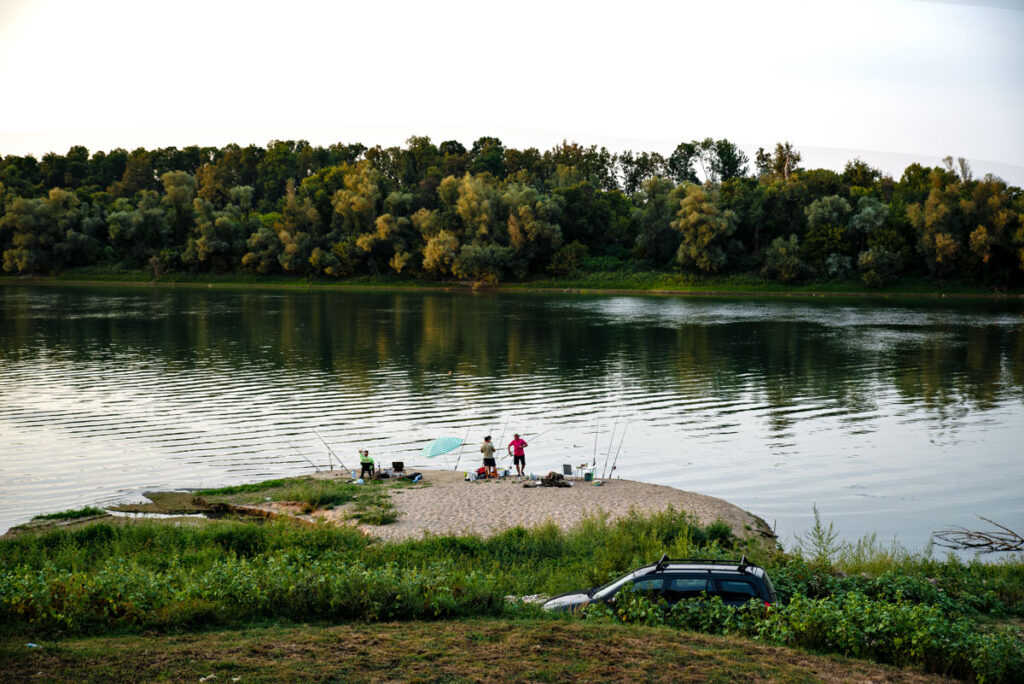
There is more than one side to the story. Truth and lies intermingle. The years pass and the witnesses become fewer. In the end, the past remains what we read about it in history books today. Murderers become heroes and people become numbers. Numbers of victims, numbers of soldiers. Numbers of starving people, numbers of dying people, numbers of displaced persons.
The Bosnian war is one of the most recent and bloodiest wars in Europe. Thirty years later, the hatred sown decades ago still divides society. In some places, the rifts seem insurmountable. When will people begin to see the beauty of their country and its ethnic diversity as a valuable treasure? So much new could grow out of it.
Info about our trip
Bosnia and Herzegovina is both an incredibly beautiful country and a country full of history. Of course, you can spend a great camping vacation here without delving into the country’s past. However, the scars of the past are so evident almost everywhere that you will hardly be able to ignore them. As painful as it is to deal with the horrific events, it is worth it to gain a better understanding of the country and its people.
In any case, you will be traveling through a region rich in culture. We definitely recommend that you visit one or two cities and, of course, plan enough time for the wild, rugged nature. Mostar and Sarajevo in particular should not be missing from your itinerary. You can easily visit all the other cities in an afternoon without missing too much. And if you are longing for the sea, wonderful bathing spots in Croatia or Montenegro are not far away.
Bosnia and Herzegovina is quite cheap. You can find a room in a guesthouse or hotel from around 25-30 euros. Eating out for two people will cost you around 20-30 euros. Petrol is also cheaper than in Central Europe.
The food is similar to that of the other Balkan states. There is a lot of meat on the menu in the form of Ćevapčići and grilled food in general. In most restaurants you will find meat and grilled dishes with chips. In Mostar and Sarajevo in particular, you can enjoy Turkish specialties, which are served in the bazaars and Turkish cafés. You can really eat Turkish food in style here.
In the cities, you can find good and cheap guesthouses or hotels on the usual booking portals. We also spent the nights at campsites: near the Mlinčići watermills at Autocamp Plivsko Jezero and in Mostar at Camping Neretva. Both campsites are clean, but also rustic and very simple. In principle, you can also camp in the wild in Bosnia and Herzegovina, which we did in Blidinje Nature Park, for example. However, find out beforehand which areas are still mined. The border regions in particular are still heavily affected by buried mines. You should not leave the paths and trails here.
Bosnia and Herzegovina is a very safe country. Crime is at a fairly low level. Only the aforementioned landmines – 30 years after the Bosnian war – still remain a serious danger. To be on the safe side, simply stay on the well-trodden paths when hiking. In general, ruined houses and border areas are potentially contaminated with mines, but there are also still active mines in the interior of the country and around the capital Sarajevo. So make sure you are well-informed locally if you want to go on hikes or tracks away from the tourist areas.
Bosnia and Herzegovina is a child-friendly destination, especially because of its hospitable culture. Families can explore national parks such as the Kravica waterfalls, or discover historic cities such as Sarajevo and Mostar. Playgrounds and family-friendly restaurants are available in larger cities, but rural areas sometimes lack modern infrastructure.
In Bosnia and Herzegovina, a rental car is the best choice for exploring the diverse landscape. The main roads between cities such as Sarajevo, Mostar and Banja Luka are usually in good condition. In rural areas, however, the roads can be narrow and poorly maintained, often without clear markings or crash barriers. Winding roads through the mountains also require caution. Highways are limited, but there are well-maintained expressways. Refueling is easy in cities, but you should plan ahead in the countryside. A toll is payable on a few sections of highway (around Sarajevo, Mostar and to Croatia). This is paid directly at the highway.
Off-road driving: Off-road driving in Bosnia is a popular adventure, especially in the remote mountain regions such as the Dinaric Mountains or along the Drina River. Many gravel roads lead to picturesque viewpoints and untouched nature. An off-road vehicle is recommended for these routes, as roads are often steep and uneven.
Wild camping is not officially permitted in Bosnia, but is generally tolerated in remote areas. However, you should follow the rules and leave your pitch clean, especially in national parks. Ideally, you should even take other people’s garbage with you so that your stay has a positive impact. Very important: watch out for mines (see Safety section).
- Anyone interested in the modern history of the Balkan region should read Marie-Janine Calic’s Geschichte Jugoslawiens
- There are several authors who have put their experiences of the Bosnian war and the Srebrenica massacre on paper, for example Mirsada Simchen with her book Lauf, Mädchen, lauf!: Mein Dorf in Bosnien, der Krieg und mein neues Leben or Hasan Hasanovic with Srebrenica. Kein Vergessen. Kein Vergeben: Der Bericht eines Überlebenden. Both are touching and emotional books
- Juli Zeh’s travelogue of Bosnia Die Stille ist ein Geräusch: Eine Fahrt durch Bosnien is no longer politically topical, but still haunting
